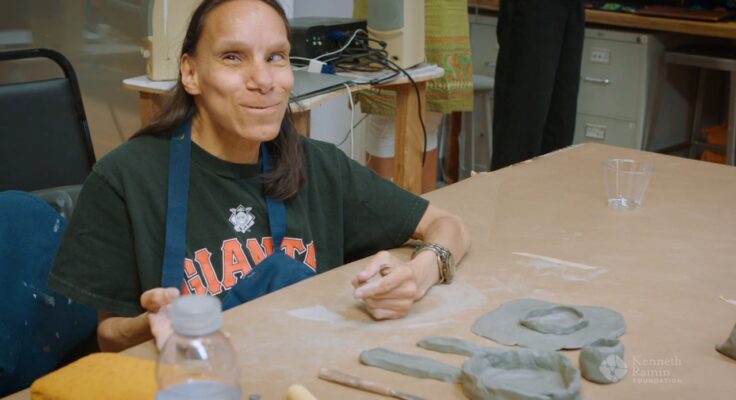When artist Ana Teresa Fernández first stepped inside the main studio and gallery of Creativity Explored she discovered magic. The studio’s walls and shelves were crowded with color, texture and shapes. Dozens of artists were at work on new pieces. They were at home in a space that embraced them fully as artists. Founded in 1983 in San Francisco, Creativity Explored partners with developmentally disabled artists to nurture the creative potential in all of us.
What emerged from Ana’s initial visit was a collaborative project “Of Here From There | De Aquí Desde Allá,” which is featured in the video below. The project took place in 2019 and 2020 and engaged nearly 50 developmentally disabled artists to explore ideas of movement and migration. An immersive exhibition at the San Francisco Art Institute in March 2020 brought a kaleidoscope of their expressive works to a wider public. Shortly thereafter, due to the pandemic’s shelter-in-place orders, the project was transformed into an interactive virtual installation.
We spoke to Ana and two of the artists, Kevin Roach and Jesus Huezo, via Zoom to learn more about the project and how it impacted their artistic practice. Following are direct excerpts and highlights from that conversation.
Special thanks to Creativity Explored Social Services Manager Roshann Pressman and Development Director Megan Hover for their assistance in making this conversation possible.
Listening To The Artists’ Voices
Ana: At Creativity Explored, it’s like you’re walking into a magical land of art. There are so many drawings and paintings and sculptures everywhere, and it seems like all the pieces are talking and speaking to you. The artists are all intensely creating work—drawing and painting and weaving and sculpting. Everyone’s just focused and making. I also noticed an enormous diversity. The artists are from all different backgrounds, cultures. And what came to mind was why don’t we migrate that magical world and create it elsewhere for people to be able to experience it publicly?
A lot of the artists don’t communicate with verbal language. But so much about what they are saying, and how it is that they communicate, is through their work—their marks, their colors, their patterns. So the idea of exploring the notion of home and their journey to where they are now was all about using those marks in their work as their voice.
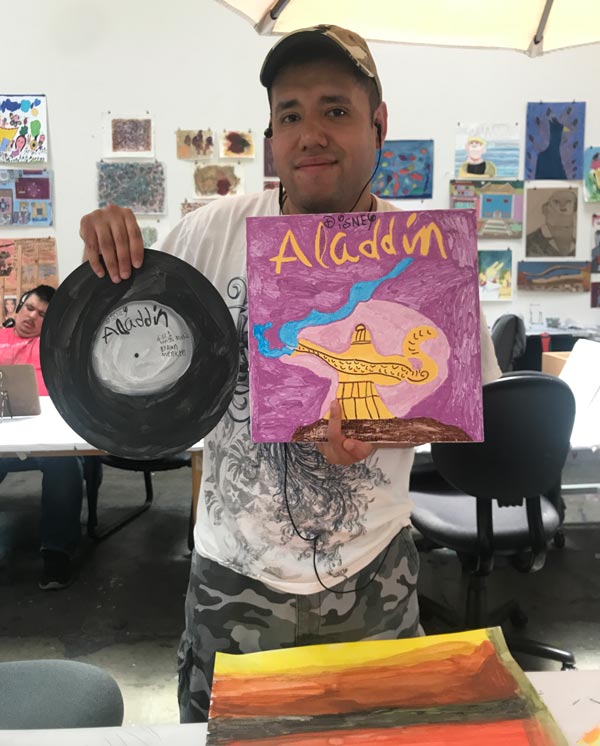
Kevin: I think home is a place where you’re really, really blessed. I have a home where I can think about drawing eyes, or any magical . I think San Francisco is a beautiful place to have a home. It’s spiritual. I don’t live in a big apartment but it’s really a dream to still live in San Francisco. Because many of my family and friends have moved out. They could not afford the city. I live in the Haight but in the Mission District , the people are so beautiful. This neighborhood is such different cultures but everybody is friendly. The community is so beautiful…I think us artists really need that.
Ana: Jesus, I can see that you’re in your house right now with your family.
Jesus: Yeah. I feel happy and relaxed…
Ana: We started by doing a bunch of different workshops. I went to Amoeba Records and bought about a hundred vinyl records. I painted them white, both the outside covers and then the records. The artists then used those to narrate the stories of their lives. They talked about their journey and what they liked. They named the title of the songs and put a title on the front of the album. And then they drew and painted on the records. So this way, I got to know them a little bit more and what their styles were.
Revealing Identities Through Repetition And Colors
Ana: Creativity Explored artists are not afraid of the white page. It’s like they can’t get to it fast enough. They devour the white page through their marks, their colors and their gestures. They show so much about their identity and their interests through what they choose to repeat. Kevin has these beautiful, magical eyes that he draws repetitively across a piece of paper. They’re like witnesses of what he’s talking about. About the neighborhood and how it’s so important how we see things and are witness to them.
Kevin: Well, the eyes, the eyes are so important for everybody to see. I mean, people lose their eyesight or have illness in their eyesight. I had shingle in my eye and I tell you, from being an artist and almost lost my eyes, I will always draw eyes because I think, almost lost my eye is a horrible thing. But it’s a thing that you learn from. You learn that you have to be very careful with your eyes. I think it’s a magical thing, eyes.

Ana: And Jesus, the way in which he uses colors. How he articulates his everyday surroundings, like his paleta cart, mixed in with the superheroes. And how he sees the paleta man as the superhero of the neighborhood. I think that allowing for their personality to shine through was really important.
Jesus: I did a drawing. Did a photo and myself in it. I the pictures. And I had a popsicle and did a ice cream. And I had help with it, for made the ice cream cart, for the words. For the window, see it for the inside. For the freezer cold. Open it, see the popsicle, the ice cream…I like the flavors that the popsicles.
Ana: You did the SpongeBob Banana popsicle, on the boat, chocolate Spider-Man…
Jesus: Yeah. Sometimes the cartoon face, the animation, the superheroes. And then for the wheels, go walking for the streets. Just like downtown to the street, to San Francisco. That man walking, for the street. For the real one.
Translating The Energy Of The Artist
Ana: We developed the idea of putting up vellum and using iPads to watch and record how they work. For example, there’s another artist, Yah , who creates these whips where she draws the marks and paintbrushes through the whips. There’s the reverberation that happens on the vellum that gets missed if it’s on an iPad. There’s much more energy. So it’s really trying to work with the energy of the artist, and being able to translate that. I see myself not as the artist, but as a translator for these artists.
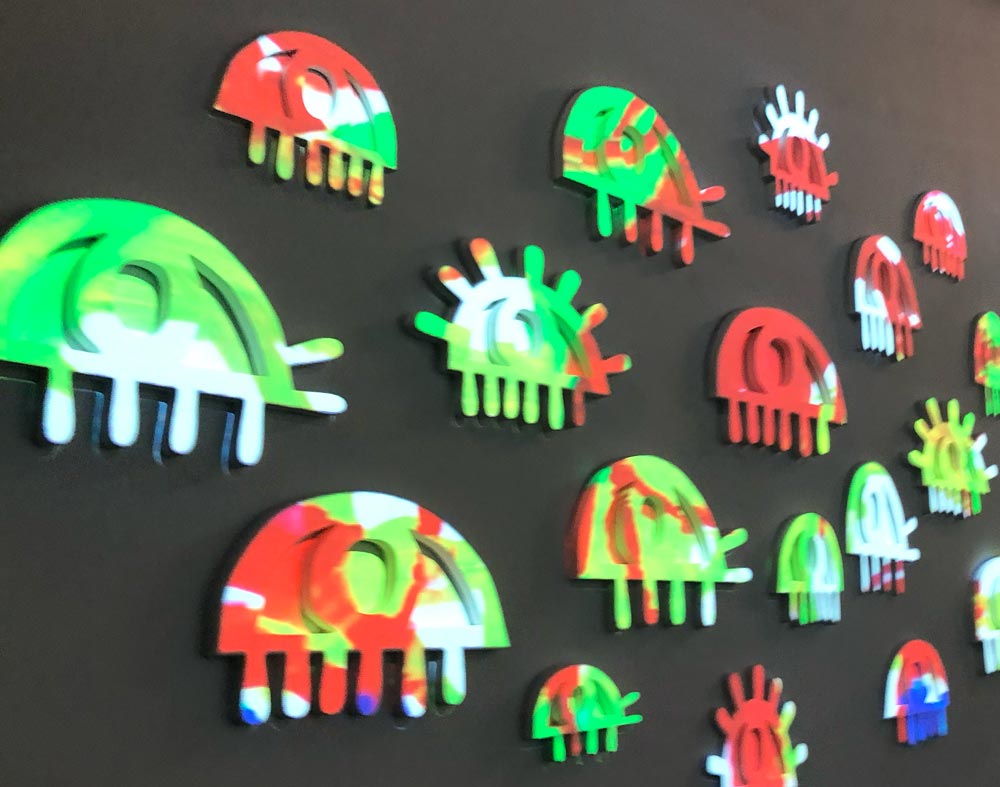
Kevin: We worked so hard. And everybody really liked Ana because she has a magical feeling to work with her. You do whatever artwork you want to do. She didn’t say “do the eye.” She just said, “Do whatever you really are drawing.” It was always so magical. When she would come, everybody was so happy. That’s really what she gave us. She came in with that flow of this kindness to us. And that’s what we need.
Ana: Throughout the time, I got to know everyone—how they work, what they like, what’s going to be better for them, whether it’s the iPad, or the vellum. In some cases, they did both. And how to communicate, because each individual, like all of us, was so particular and different, and we communicate in different ways. It was an immense joy to just get to know everyone through their artmaking, and see what everyone would come up with.
It was very organic. With each artist, there were times where some were more present. It was always fluid—we just went with the energy and let them be the leaders. And just try to be there at the right moment, to be able to hold that space for them.
Transforming The Works Into An Immersive Exhibition
Ana: Then the editing started to happen. I realized what aspects or figurative elements we could use as a placeholder, as a sculpture for the marks. Kevin’s eyes were one. There were about 70 eyes, different sizes, located on the wall that we created. Elana Cooper‘s flowers were another placeholder for the marks. And there was a cloud, by Charlie Barthelet.
When the paleta cart came about, we were like, Jesus, we need your paleta cart! It’s so freaking cool. We need to have it because it’s so much about home. It’s so much about people creating their sense of home, in a place far away from home. The paleta cart is something so Mexican. I’m from Mexico and when I came to the Mission and I saw the paleta cart, it was like … so we had to throw it in the exhibition.
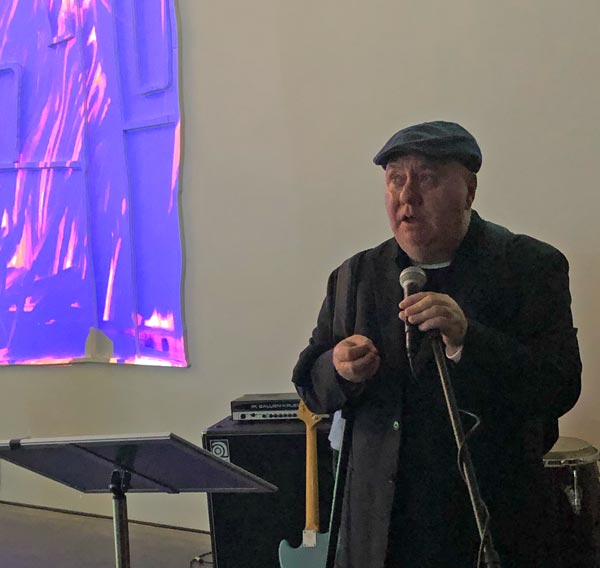
Jesus: I was at the show there for everyone, for these pictures and…
Ana: Your family was there, they all saw your cart.
Jesus: Yeah. Yeah. My family there too. I feel happy and relaxed.
Kevin: I mean people were so happy to see that show. It’s like, everybody was just amazed. And the dance and the music and the culture. It could have been right in the Mission. We needed that energy that made it feel like we’re right in 24th Street, or part of the community. I mean, I wore a suit and I don’t wear suits very often. Everybody did a part, you know what I mean?
How Has This Project Influenced Their Art Now?
Ana: I think this project influenced my life. Like Kevin said, I got to know them as people, as beautiful, talented individuals. And it was a part of the community that I had never made time or spent time with. And so for me, it was really coming to understand the beauty of what that community brings.
Kevin: I haven’t really threw my energy off of the eyes yet. Me and Pilar Olabarria did a new tapestry, with eyes on it. And I’m working with three other artists with it. I think we’re going forward, you know what I mean? We’re going forward because that whole show made us stronger. And of course, we want to show the world that we’re real people. All of us put our soul into our work. We’re coming at nine in the morning and put that soul into our work. We work, and it’s our job to do our work, but we really, really enjoy it too. We’re really just happy that we’re with each other. I hate to say it, but we don’t want to be made fun of. We’re not lazy, we’re artists. We’re very serious about our work. And I think people don’t know us artists that well. I think people should come more into school here or see us more and understand. And they would know that we could be your next door neighbor…I’m kind of happy at the school where everybody’s somebody.
Jesus: I had the pictures working today. I had the drawing for this, for the mask, I did the face.
Roshann: Now you’re doing the papier-mâché, right? They’re almost like luchador masks, huh?
Jesus: Yeah. For the head that I make for the mask the faces with the paper and the square one and for the blue water, did their eyes, did the nose and the mouth for the teeth. Did the coloring, did the face and then it is all.
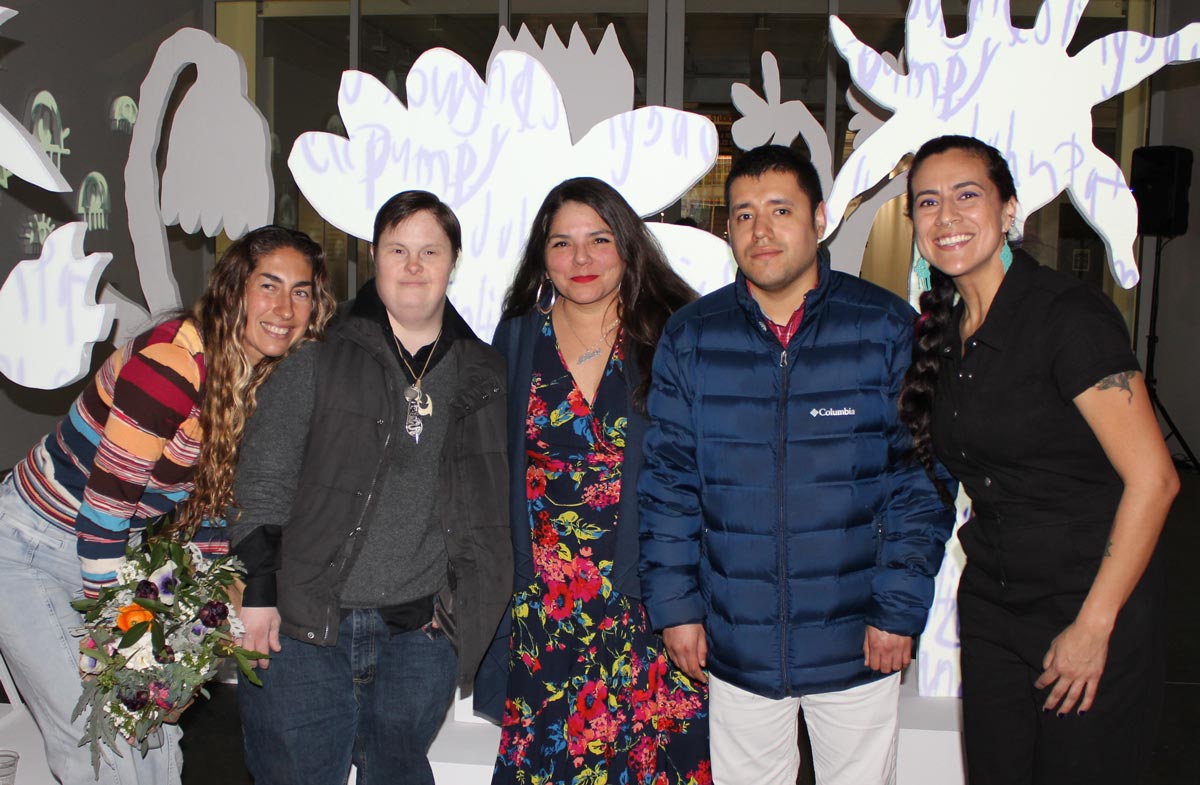
Ana: The amount of power and energy that they hold—they create constantly. I was kind of put to shame, in the sense that I realized how courageous all these artists are, and how unafraid they are to create. Like the ego is extracted and so they just let the soul speak, like Kevin says. There is no ego to obstruct it. I’m trying so hard to channel that, to let that be the inspiration with how I continue on in my own practice. That show for me was letting go of a lot of fears. So, just touching on that frequency of their own courage, to let mine be what leads the way. Similar to how they lead their lives.
Kevin: I would like to say that I wish that we could do another show. I’m so inspired about what I do. I’m very, very political. I mean, I’m just appalled at what happens in the world, and you have to be. If you’re an artist, you kind of see what’s happening. I think sometimes our artwork shows our physical status too. It shows some parts of what we feel against. We don’t draw guns in this school. We don’t draw violence. So I just want you to know that that’s important to us, that the world would be in peace. We’re in peace in our heart. You know what I mean?
Explore more of the collaborative process of “Of Here From There | De Aqui Desde Allá,” including the visual, dance and poetry workshops and artworks on the Creativity Explored Tumblr.
Bridging Communities Through Temporary Public Art
“Of Here From There | De Aquí Desde Allá” was supported through the Kenneth Rainin Foundation’s Open Spaces Program. This grantmaking program funds temporary public art that addresses timely community issues while cultivating connection and creative expression. We invite you to watch the above video to experience this moving project.
